Archive for Lawn Care
Winter Gardening: How to Maintain a Healthy Garden during Winter
Winter can be a rough time for your garden. From heavy snow to frost forming on the soil, it might seem as if all odds are against your garden. The good thing is that growing a healthy garden during winter is easy as long as you know your way around during winter gardening. If you manage to keep your garden healthy throughout winter, the chances are that it will look even better when spring arrives.
Here are a few insights for caring for your garden throughout winter:
Water Wisely
You need to be careful with the time you water your garden during winter. If you water during the extra cold times of the day, the water might freeze, leading to frost damage. The best time to water your plants would be during the warm times of the day. Since plants tend to absorb water slower during the winter days, and the warmth helps ensure that it flows efficiently through the plant’s system.
Mulch Your Garden
Mulch can not only help to preserve the warmth of the soil but also keeping weeds away. By improving the warmth of the soil, you increase the pace at which water can be absorbed by the plants. It might be wise to use leaves to create mulch, especially after you let them rot since leaf mold discourages the development of weeds. Collect some fallen leaves and layer them over the soil.
Introduce Microclimates into Your Winter Gardening
During winter, you want your garden plants to receive sunlight, but not the cold. This is something that creating a microclimate can help you with. Ideally, this involves creating a greenhouse effect on a smaller scale, and using cold frames can be useful. This will require you to house your garden under a transparent material that will let in some sunlight, but it is hard enough to keep the cold temperature out. Of course, you can always keep these materials away during the hotter months.
Remove Unhealthy Plants
If left to reside alongside the rest of your plants, unhealthy plants can easily spread pests, fungi, and diseases to the rest of your garden. This is the last thing you want for your garden during winter. Get rid of the spent plants. As for any plant that is finished, but is disease-free, uproot it and bury it in your garden. Doing so will revolutionize your winter gardening by introducing organic matter to the soil and improving its general health.
Winter gardening requires a little bit more effort and attention to detail. Show your plants some love during this time, and you can expect them to blossom during the warmer months. Consider the winter gardening tips above to improve the health of your entire garden. Contact us for more gardening tips.
Inspiring Landscaping Ideas for your Front Yard
Every homeowner dreams of a lush and colorful garden in their front yard. While upgrading the front yard with striking landscaping ideas can boost the appeal of any home, it also needs a lot of inspiring ideas for skillful execution.
You can enhance the appeal by settling for the right edges, flowers, shrubs, and plants to complement the aesthetics of your home. Before beginning to design your front yard, create an inventory of the space available. Because there are numerous ideas, decide on the one that best suits your space.
1. Lighting
If you believe your home is a masterpiece, then your landscaping becomes the stage you want to proudly display in a luminous halo. Because every stage has its footlights, your front yard alike needs perfect illumination.
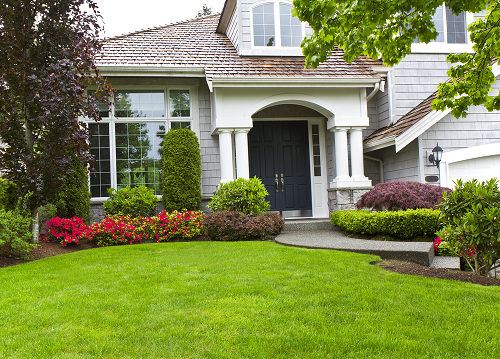
From scene stealing fixtures to subtle accent lighting and canopy to flood, you are sure to find the right option for every style. Inlaid lights for instance show off your landscaping ideas while antiquated lamp-style lighting direct your visitors to your front door after dark.
2. Accent Color Tree
An accent color tree can magically transform your yard by adding seasonal color, scale, shade, and overall structural interest. Choose a species that work for your climate, personal preference, and the design of your landscape.
Going for a small tree with bold colorsto offer your home strong visual appeal. A flowering cherry for example gives the best highlight during spring while a Japanese maple creates vibrant foliage color in autumn.
3. Urns
Classic urns go beyond holding flowers, cremated ashes, and wine, among others. Today, these curvaceous structures are used for many styles as decoration items especially in the front yard.
Large urns add carb appeal by popping color to the garden and serving as fountains. Whether you choose to fill them with plants or leave them empty, urns can be a powerful art element with endless textures, glazes, and forms.
4. Omit the Lawn
Even if you live in an evergreen environment, you can still omit the lawn to create a unique landscape. Avoiding a lawn means you will not spend too much time maintaining it. It means enjoying your outdoor living space in all seasons.
When planning your front yard landscaping, pay special attention to the entrance to ensure it is clear and inviting. Unique structures, plants, trellis to block the wind or rain can do the trick. Remember that every façade has a visual asset and liability. A properly and creatively done front yard goes to highlight the strong points and mask the unattractive ones. Take these landscaping ideas to give your home the highlight it deserves. Contact us for more information.
Shrubbery Like Boxwood, Lavender, and Camellia
Adding shrubbery to your home’s outdoor landscape is a wonderful way to frame your garden and border a winding path. One particularly popular way for doing both, or either, is with evergreen shrubs.
Benefits of Evergreen Shrubs
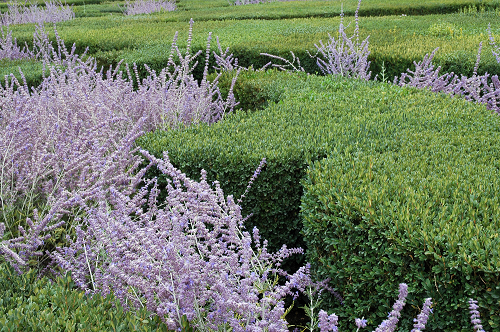
Evergreen shrubs are shrubs that can be a permanent fixture in your garden thanks to the fact that they will last all year.
In fact, evergreen shrubs like fatsia, lavender, and camellia can create beautiful flower displays and perfume-like scents throughout the year, even when everything else in your garden appears to have fallen dormant.
Evergreen shrubs will often be naturally variegated and create a colorful cascade of colors over your garden. Some shrubs are like trees and come with needled or broadleaf foliage.
Adding shrubs to your property will beautify the landscape all four seasons and provide a smooth transition between taller trees and the groundcover plants lining your walkway or garden.
Shrubs can be used for a number of different purposes beyond lining walkways and framing your garden as well.
Shrubbery can provide groundcover on slopes, buffer ambient noise from entering your home, and provide a breathtaking backdrop for your garden.
Boxwood Shrubs
One of the easiest-to-work-with types of evergreen shrub is boxwood shrubbery. Boxwood is hardy to zone 6, which essentially means that it will maintain its integrity no matter what nature throws at it.
Boxwood also fits most people’s initial idea of a shrub – boxwood has tiny, glossy foliage that can be hedged by Xeriscape’s landscaping experts into just about any desired shape.
Most homeowners like their boxwood shrubbery to be a few feet in diameter but, left to its own devices, boxwood can grow up to two dozen feet tall! This is a hardy shrub that will grow well in moderate sun and ligher shade.
Lavender
Lavender is a drought-tolerant plant that is a kissing cousin to mint, and each has a similar fragrance. Lavender, though, is a perennial shrub that has a lot of different size and color options to match your landscape.
There are actually four main types of lavender that homeowners in North America typically consider for their gardens: English lavender, Spanish lavender, Portuguese lavender, and lavandin.
English lavender owes its name to the English lavender trade of the 1700s and the fact that it smells so wonderful. English lavender can furnish homeowners with those variegated colors alluded to above: purples, violet, mauve, and mixtures of all three are afforded by English lavender.
Spanish lavender will come with pink and purple petals and have a unique pine scent. Portuguese lavender (a.k.a., Broadleafed lavender), on the other hand, will have paler purple leaves that are slightly larger.
Portuguese lavender can cross-pollinate with Engligh lavender, and both types are used in aromatherapy. The camphor in Portuguese lavender is good for attracting friendly insects into your garden and lending a sense of exotic variety and soothing color.
Lastly, lavandin might be a fancy name in this context since lavandin only means a cross between English lavender and Portuguese lavender. Lavandin produces sterile seeds but can grow in hot, arid climates and live through periods of sustained drought.
Camellia
Camellia is also a type of evergreen shrubbery, but the flowers of a blooming camellia are truly unique in certain species. There are more than 300 species of camellia, and approximately 3,000 hybrid species. Some camellia flowers are double.
Where does camellia work? Woodland gardens with dappled sunlight or gardens with slightly acidic soil are especially promising foundations for camellia.
Ask Xeriscape about the possibility of installing camellia shrubbery around your garden because the flowers come in a variety of beautifying colors: pinks, reds, yellows, and whites are common. Contact us for more information.
Discovering the Best Flower Bed Ideas for Your Home
Flower bed ideas are typically broken down one of two ways – by the color(s) that you’re going to be using and, secondly, by the kinds of materials you might use to bring your flower ideas to life (e.g., wheelbarrow flower beds).
Monochromatic Flower Beds
Monochromatic is a blend of two words – mono, which means one, and chromatic, which refers to color. Monochromatic flower beds are designed from blooms that are all the same color.
A monochromatic flower bed can add a splash of color to your outdoor landscape, and the thing to bear in mind is that, although everything will be one color, you can use various shades and textures to create a stunning effect.
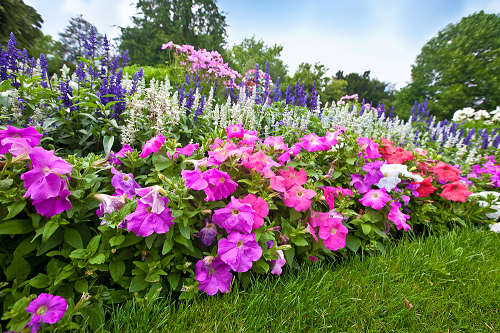
Purples and yellows are very popular variations when it comes to monochromatic flower bed ideas.
With a purple monochromatic flower bed, you have a lot of beautiful flowers to choose from: lavender, sage, leather flower, hydrangea, and grape hyacinth. A walkway lined with lavender can be absolutely breathtaking.
A yellow color scheme is also a popular choice for monochromatic gardens. Yellow gardens let you blend in deep golden hues with paler flowers with an almost buttery accent.
The Denver Daisy – a.k.a., Black-eyed Susan – and marigolds are great for adding deeper shades of yellow to a backdrop of a more mellow flower like the annual nasturtium.
Keep in mind that blues, whites, and violet flowers will have a more calming effect in your garden whereas warmer colors like red and yellow can create instant excitment!
Dichromatic and Ombre Flower Bed Ideas
Dichromatic means two colors wheras ombre is a French word that means you’re going to be using a blend of colors that gradually blend in to each other.
If you only want to use two colors, with varying shades of each color, then you probably want to look into a dichromatic garden. You’ll also want to consider using contrasting yet complementery colors to create the most powerful aesthetic look.
If you’re feeling more adventurous, then an ombre flower bed might be the way to go. Ombre flower beds typically blend some of the cool hues and warm hues discussed above to gradually blend in flowers with a lighter hue with dark hues.
An ombre flower bed typically starts off with a walkway made of flowers of a cooler, softer hue so that the eye gradually gets more and more captivated with the darker tones at the back of the garden.
Wheelbarrow Flower Garden
Sometimes called wheelbarrow planters, a wheelbarrow flower garden can be made using a wheelbarrow that’s rusted-out, cracked, or has a broken wheel.
The wheelbarrow, though, should have holes in the bottom to allow excess water to drain out. The big benefit to a wheelbarrow flower garden is that you can move it to an area with more sunlight.
Walkway Flower Beds
As alluded to above, a walkway flower bed can be a wonderful segue into a captivating garden or a landscaping effect all its own.
Millions of homeowners have already beautified their homes with a walkway flower bed culminating with their front door.
Walkway flower beds actually touch on a difference with gardens in general – a walkway flower bed would be an example of a formal garden path with right angles and straight lines.
That said, a walkway flower bed could open up into an informal pathway kind of garden (the second type) where you would have a meandering or curved path. A crescent-moon type of garden in the front yard would be an example of this second type.
Which flower bed ideas appeal to you most? Contact us for more information.
Strategies for Getting Your Lawn Ready for Cooler Weather Ahead
Although the month of August is in what people call the dog days of summer, you have to realize that the first frost is right around the corner. The season’s first frost might well come at the end of August or early September.
When the first frost of the season hits, most of your annual plants will wilt and perennials will be sent into their dormant phase for the hardier winter months ahead.
While these effects can’t be avoided, there are a lot of steps that you can take to fortify your lawn for winter.

Keep Up Irrigation
Your lawn has a kind of wisdom all its own. In the fall, the grass will stop putting so much energy into growing new blades and put those resources into creating a resilient root system to survive the coolet months ahead.
The thing to realize is that you have the chance to significantly strengthen your grass’s root system by watering your lawn right now. Xeriscape is a landscaping and irrigation company that can give your yard the nourishment that it needs.
Your lawn will naturally grow less bounteously in the late summer and early fall. That said, your lawn will still benefit from giving it the three main ingredients that it needs to grow – nitrogen, potassium, and phosphorous. Xeriscape can help here as well.
Repair and Weed
There’s an expression that when you fail to prepare you actually prepare to fail. That might sound harsh but what’s undoubtedly true is that homeowners who have an eye towards the future usually have the best yards.
Think of late summer and early fall as your opportunity to create a lush landscape for spring next year. Xeriscape can help you fill in bald patches, or you could look into a grass repair kit that includes seed, fertilizer, and mulch.
After you’ve done the real heavy lifting by repairing bald spots, you might want to look into uprooting weeds so that everything can grow to its full potential.
The thing to bear in mind is that weeds can fortify themselves and regrow with renewed vigor in early spring next year if they’re not dealt with soon.
Rake Up Leaves
A lot of people are loathe to rake up their leaves because they have such a beautiful appearance in your yard.
That’s true – a defoliating maple tree, for instance, can be breathtaking….and, at the same time, be ruining your yard and actually jeopardizing your health!
Lawns have to breathe in the sense that leaves that are allowed to linger on your lawn will prevent sunlight and air from getting to your lawn, which will cause your grass to be less healthy than it otherwise would be had you raked right away.
Leaves also decompose very slowly so that, if you don’t rake leaves in the fall, you’ll have a layer of basically intact leaves over your yard all winter. Snow mold and brown patch are both serious possibilities if leaves are allowed to linger all winter.
Fungal infections and health problems could also crop up if you don’t rake away leaves. Xeriscape can help with all kinds of landscaping, including getting leaves off the property. Leaves that get matted now could prevent fresh grass from growing in the spring.
Use Leaves to Compost
All of those leaves that you’ll eventually rake up can be put towards composting in the spring. You might want to consider putting fallen leaves in a compost bin and allowing decomposition throughout the winter. Turn the compost over regularly to have consistent temperatures, or simply rely on Xeriscape for your lawn care needs! Contact us for more information.
Lawn Maintenance: The Importance of Lawn Treatments
If you love your lawn (which we are sure you do), then you know the importance of lawn care and that it goes beyond watering and mowing. Yes, these two are the foundation for a healthy lawn, but lawn maintenance is a complex science, involving feeding, aeration, and controlling insects and weeds.
Benefits of Lawn Treatment
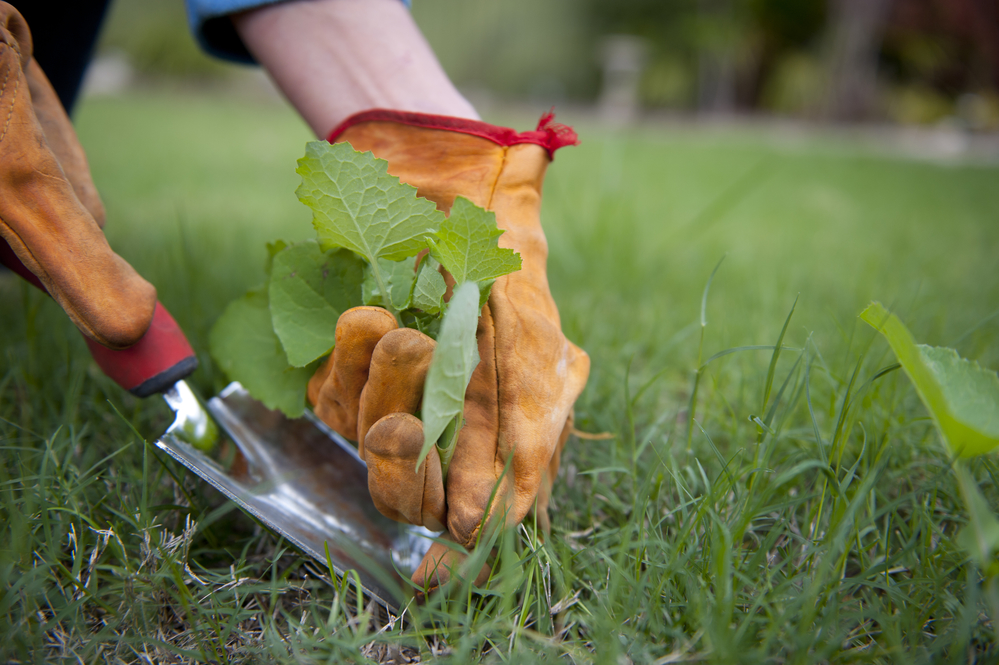
Proper lawn care ensures that your lawn can withstand threats from lawn-damaging weeds and insects. It also ascertains that your flowers, grass, and shrubs can fight-off diseases. Furthermore, lawn care ensures your turf can survive unpredictable weather and guarantees your lawn is ever nutrient rich.
However, seeing as it is time-consuming and a difficult undertaking, we recommend you engage professionals. Here are five benefits of hiring experts.
- Expertise
You might be a proficient landscaper, but there is knowledge and services only professionals can provide. They understand the shrubs and trees better and know the different grass varieties. They can often tell what is ailing your greenery in an instant and prescribe the best treatment program. Moreover, seeing as they understand the local climate, and have years of experience, they will engage in preventive measures to ensure your lawn can ward off seasonal pests and diseases.
- Avoid Accidental Damage
64% of American believe that all grass should be fertilized during spring while another 57% believe a lawn is not healthy if it is not green. These are false believes that lead to damage by over-fertilizing and leading to a high accumulation of salts in the soil.
Lawn treatment services, on the other hand, avoid common mistakes know how to treat your plants.
- Cost Effective
It might sound counterintuitive, but engaging professionals is cost-effective. Think about it; you will have to invest in equipment such as mowers, aerators, and brush cutters, invest in chemicals, and fertilizers. Furthermore, given that there is a period of trial and error, there is a high likelihood that you will be paying to correct mistakes.
However, with professionals, you will not pay to correct mistakes, and you don’t have to invest in the equipment and chemicals.
- Property Value
If you are considering putting your house on the market, you can increase its value by proper lawn treatment. Lawn maintenance can increase the value of your property by up to 15%. Who wouldn’t like that?
Hiring lawn care experts is the only indisputable way to ensure that your lawn is always in pristine condition.
- Consistency
As a homeowner, there is a likelihood that work, plus maintaining your lawn can be overwhelming. It will be challenging to create let alone observe an effective lawn care routine.
However, lawn maintenance experts ensure that your greenery, is trimmed, fed, and watered consistently. They also handle far more, and the result is a healthy lawn, and one that you can enjoy.
Conclusion
Though it is a demanding task, lawn treatment is of utmost importance. It improves air quality while maintaining the aesthetics of your home. Engaging the services of a professional ensures that your lawn is ever impeccable, it saves you money, and keeps you from physical labor. You can contact us for all your lawn maintenance, repair, and landscape design needs.
Tips for Choosing Landscaping Shrubs
Shrubbery plays a great role of defining the visual space of your front yard and also guiding visitors to your doorstep. Since they come in variety in terms of color, shape, and size, the task is to pick shrubs that match your needs. The variety also gives you the freedom to ensure that your yard is as appealing as it can be. Consider the following tips when picking the right plants for your landscape.
Size of the shrubs

When it comes to choosing size, you need to be thorough. The secret here is to choose the ones that complement other trees and flowers in the landscape. Proximity to other plants is also a factor to consider. Their placement in the garden should be such that it is easy to care for them as well as other flowers and trees.
Where to plant and why
In most cases, the function of the bush determines where you should plant. As you may know, shrubs have different types of shrubs have different functionalities and hence you need to consider this before making a choice. For instance, long bushes are most suitable planted near the home as they will help control the climate during summer and winter. On the other hand, if you have a sloppy area that is susceptible to soil erosion, you should go for low growing plants. These will spread fast and within a few years you will have the slope completely covered.
Their closeness to other plants
Some bushes tend to grow tall and can shade other landscape plants from getting enough sunlight based on where they are planted. If you want them to be close to other plants, then you should consider planting the larger ones should fall on the northeast side. If you feel that the shrubs will interfere with the sun exposure to other plants, then the smaller ones are most suitable.
Color choice
Shrubs come in different colors and there is a color for each season. Since adding color to your landscape is one of the major reasons for having a shrubbery, you need to be keen when choosing the right colors. There are a variety of green shades to choose from, which help add interest to your landscape. The flowers is also another factor to consider when it comes to choosing the right bushes. Some common colors available include white, red, and blue. You can plant each color in between. There are also some plants that produce colorful berries which is a plus since they can feed birds in your garden.
Growing conditions
It is always wise to think about suitable climatic conditions for a particular plant before planting it. If you are in the south or southeast where the climate is a bit hot, you need to go for drought resistant shrubs. If you are in the north or northeast, consider cold resistant bushes. Another factor to consider in this category is the salinity. If you live near the beach where salt level are a bit high, choose plants that can withstand the condition.
When choosing shrubs for your landscape, always make sure you choose the ones that complements you yard in terms of color and size. The period the plant will last in your yard should also influence your choice. Contact us for more information.
Determining the Right Time to Mulch
DLaying mulch not only improves the appearance of your landscape but it also has several other benefits. It minimizes weed growth and helps moisture retention, hence making your plants stay strong and healthy. It also acts as a good insulator thus regulating temperatures depending on the season. You can also curb soil erosion and plant damage during mowing through mulching. As mulching material decay, it adds nutrients to the soil.
Right mulching time
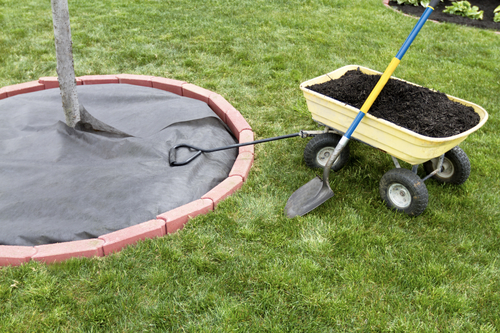
Knowing the right time to mulch will help you enjoy all the benefits that comes with the exercise. Many people have the tendency of mulching as soon as the spring sets since it’s one way to improve the appearance of the landscape. However, mulching as soon as the warm season starts is not advisable. You need to give the soil some time to acquire warmth, hence making mid-to late spring the right mulching time. If you had laid winter mulch, pull it off gradually to help the plants adapt to the warmth. Pulling it all at one can subject the plants to late-season cold.
How much mulch should you lay?
It is advisable you start by laying a thin layer of mulching material so as to give your seedlings the space to grow. As the plants get established, you can increase mulching material accordingly. You should put more mulch during summer to help retain soil moisture and provide insulation from cold during winter.
Determining the right amount of mulching material can be tricky. This is because you don’t want to lay too little material that you leave the plants exposed or too much that it kills the plants. You can determine the right amount depending on the type of mulching material you want to use. If you are using a fine material, then 1 to 2 inch layer should be fine, when 3 to 4 inch should be fine when laying coarse material. If your intentions are to prevent anything from growing in an area, then you can lay as much material as you want.
Laying too much mulching material results in the plant roots growing with the material hence a shallow rooting system. This makes your plants susceptible to damage by drought and cold weather. You can avoid this by putting a moderate layer depending on the type of your crops. When mulching an area with trees, you need to leave a space between the tree trunks and stem so as to prevent them from rotting. Leaving space also ensures that pests such as slugs and mice don’t get a habitat or destroy your plants.
When putting mulch, you need to put in consideration the style of the area. For instance, if it is the pathway, a windy area, or a slope hence susceptible to erosion, you should put heavy mulching materials. The size of the mulching material should also help you determine the depth of the layer. If you are using big chunks, then the layer should be deep, but if you are using small material, then the layer should be shallow. Contact us for more information.
Improve the Appeal with these Simple Lawn Treatment Tips
Every homeowner dreams of a perfect lawn. Unfortunately, only a few yards in residential areas are green, lush and healthy. This can be attributed to the lack of adequate care. In simple terms, if you do not put some time and effort into protecting, preserving and enriching your lawn, you will not get beautiful and thriving turf. Under ideal circumstances, you should engage a professional for yard maintenance. If you are set on DIY upkeep, use these simple lawn treatment tips for better results.
Check Your Mower Settings

If your grass is growing healthily but the effect after mowing is not stunning, it is advisable to consider the lawn mower settings. Setting the blades to cut the grass to short can be highly detrimental to the beauty of the yard. You should note that different species of grass have optimal cutting heights. Consult your landscaping expert on the best length for your grass. Otherwise, you will have to deal with bald patches, poor root systems and even drying plants. When mowing, ensure that the mower blades are sharp, and alternate the cutting patterns for long-term lawn appeal.
Water at the Right Time
Watering your grass is an essential practice for a healthy lawn. Unfortunately, irrigating the plants at the wrong time can cause unexpected harm. For instance, if you water the grass in the evening, the moisture will remain on the blades for a prolonged period. This can promote the growth of harmful fungi on your property. On the other hand, watering when the sun is blazing prevents optimal absorption due to evaporation. Therefore, you should irrigate during early mornings for maximum absorption without the moisture overload.
Rake the Fallen Leaves
Raking the lawn is not fun for most people. However, if you want to keep your yard and grass in the best condition, this practice is necessary. When dead leaves are left on the lawn for too long, they will suffocate the grass and prevent the penetration of sunlight. Consequently, the grass will no longer have the lush green look. In addition, leaves promote moisture retention, and this will increase the risk of fungi attack. So, plan for the timely removal of dead leaves to protect your lawn.
Deal with Bald Spots
Bald spots can develop on the lawn due to unexpected problems. For instance, if you have not upheld the best mowing practices, some areas of the yard will look a little bare. Also, poor soil aeration and smothering of grass by objects can cause bald patches. It is important to deal with these spots to restore the beauty of the lawn. The most convenient method for dealing with bald patches is filling in with a repair mixture. Typically, the repair material consists of suitable grass seeds, special fertilizer and in most cases, some organic mulch.
Finally, you should preserve the beauty of your lawn by controlling weeds. These unwanted plants will take away the nutrients intended for your plants. As a result, the grass will not grow healthier over time. Also, weeds are unappealing and will compromise the harmony of the turf. Therefore, you should plan for immediate weed removal if you notice any signs of invasion. Contact us for more information.
Outdoor Space Improvement: Simple Garden Ideas for Beginners
Establishing a garden on your property can be highly beneficial. In general, a home garden can be used for growing consumable produce or decorative plants. You can make your property more beautiful by planting flowers and other appealing plants in your garden. Alternatively, you can choose to plant vegetables, herbs and fruits. You will have access to fresh produce at a low price. It is possible to combine both categories of plants for a perfect garden.
If you are new to gardening, you might find starting the process challenging. Here are some basic garden ideas and simple guidelines for a smooth beginning.
Understand Your Environment
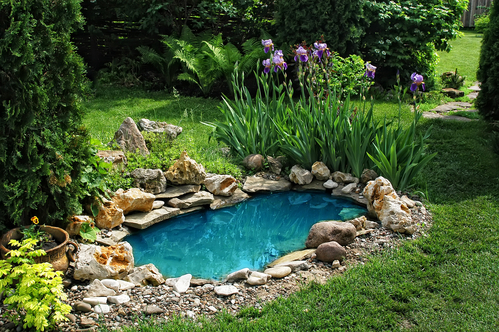
It is essential to learn more about your environment before starting the gardening work. If you are knowledgeable, you will increase the rate of success from the beginning. For the best results, choose a perfect spot on your property to start a garden. The spot should have adequate sun exposure. Too much or little sunlight will damage plants. It is also advisable to check the condition and properties of the potential gardening soil. Once you understand the specific characteristics of your garden, you can choose the most suitable plants to match the unique environment.
Consider Container Gardening
If you do not have enough space on your property, consider choosing container gardening. This one of the most beneficial and popular garden ideas in the modern home environment. You will be able to enjoy flowers or produce even with limited space. In addition, container gardening gives you more control. For instance, it is possible to grow any kind of plant because you can prepare unique soil material and move the container to different places for optimal environmental conditions. If you decide to take up container gardening, consider taking advantage of space on your patio, deck and rooftop.
Look into Vertical Planting
Most people opt for garden plants that remain close to the ground. If you are interested in a fresh idea for your home, think about growing some vertical plants. As implied, vertical planting involves establishing plants which grow upwards by climbing onto fences, stakes or trellises. This type of gardening can help you maximize your limited space. It also creates unique aesthetics in the home. In addition, this is the perfect gardening choice for people who might find squatting and bending difficult.
Choose Seeds or Starter Plants
Once you have decided on your ideal gardening style, you can begin choosing plants for your project. When selecting the perfect plants, it is advisable to keep your environment in mind. Some vegetables, herbs and flowers will not thrive in certain environments. Therefore, opt for plants which can grow with ease in your home. You will also need to choose whether to acquire starter plants or seeds. For a beginner, starter plants or seedlings are the most suitable. This choice will eliminate your worries about sprouting. On the other hand, seeds are cheaper, and you will find diverse plant species.
Utilize Companion Planting Methods
Consider utilizing a companion planting technique in your garden for better results. This approach is perfect if you would like to have a mixture of plants on your space. Companion gardening involves planting different complementary species of plants together so that they will benefit from one another. For instance, if you are planning on growing vegetables, you can plant carrots alongside leeks. The lees will repel harmful carrot flies. Note that there are some plants must not be planted together. If two species are affected by the same diseases and pests, avoid planting them together. Contact us for more information.





